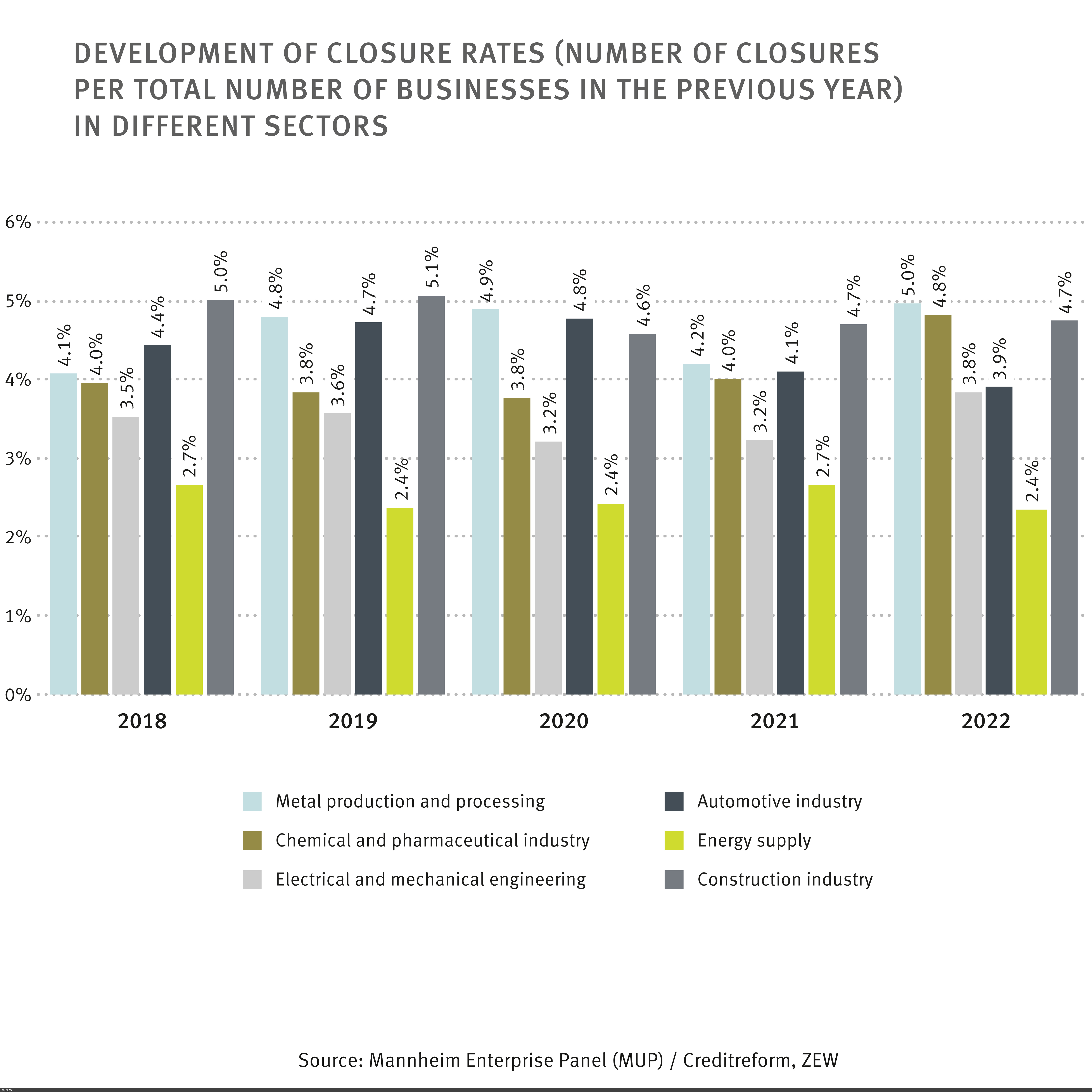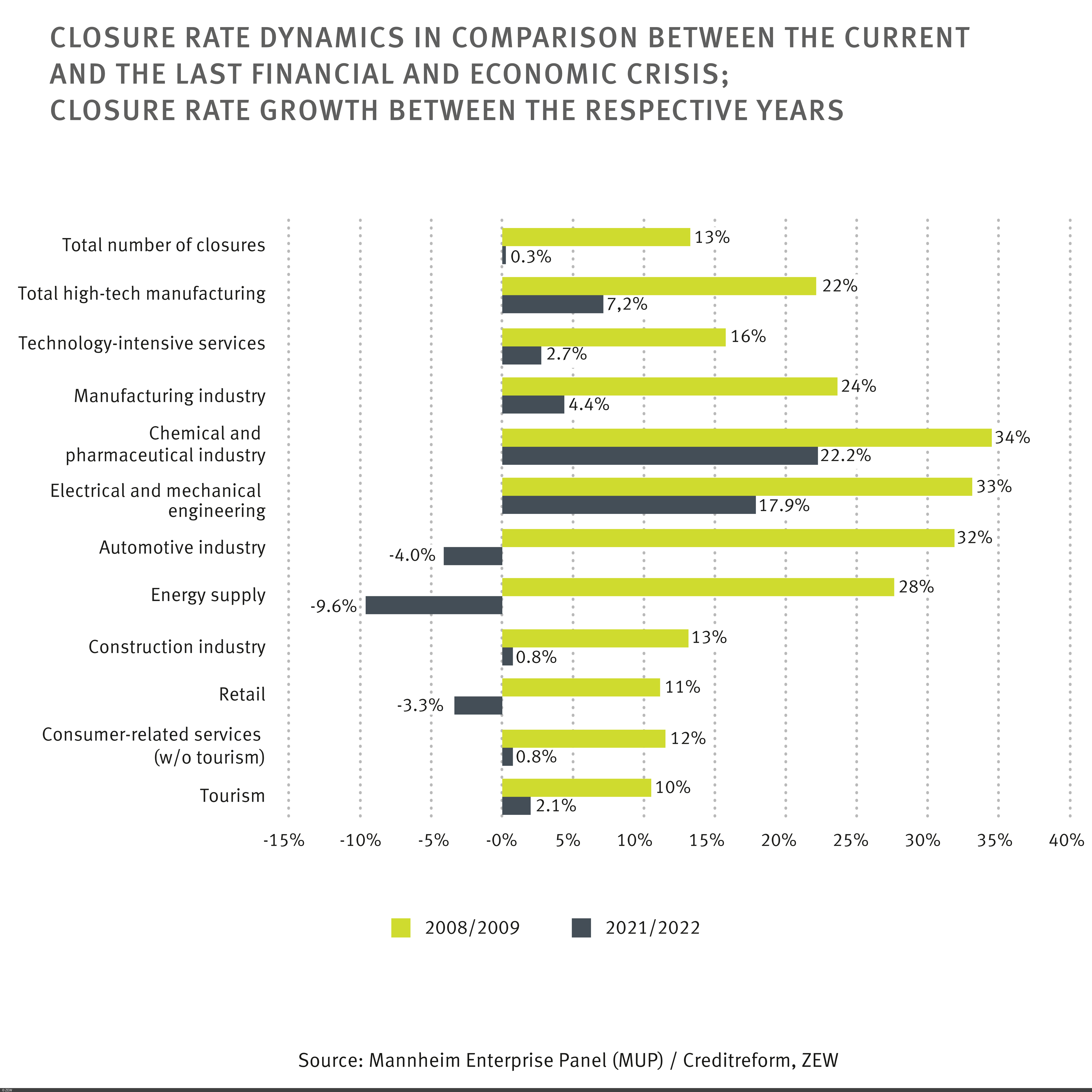2022 Saw More Firm Closures than Start-ups
ResearchSharp Rise in Closures in Manufacturing and Innovative Sectors
The past year was marked by the economic crisis triggered by the Ukraine War. This led to a noticeable decline in entrepreneurial ventures. A recent study has now revealed that closures also increased, albeit only slightly by 0.3 per cent. Notably, for the business landscape in Germany, it is the first time since 2019 that the number of firm closures has surpassed that of start-ups. This is the result of a joint study by Creditreform and ZEW Mannheim, basedper on the Mannheim Enterprise Panel (MUP).
With approximately 154,000 closures in 2022 compared to 148,000 new start-ups, the number of businesses in Germany declined and currently stands at around three million. This is likely due to the current economic climate, which appears to dampen the enthusiasm for launching new businesses.
Industry suffers from high energy prices
Different closure patterns are observed across sectors concerning the number of existing businesses. The sharpest decline was recorded in the manufacturing sector, where a relatively high number of more than 9,000 closures contrasted with a low level of start-ups. “Closures occurred mainly in energy-intensive industries such as metal production and processing, or the chemical and mechanical engineering sectors. The significant rise in energy prices likely played a role in the decision to close these firms,” explains Dr. Sandra Gottschalk, a senior researcher in ZEW’s “Economics of Innovation and Industrial Dynamics” Unit.
Nevertheless, developments in the automotive and construction sectors illustrate that broader economic challenges do not necessarily lead to closures. The automotive industry reported less closures, while the construction sector remained resilient despite challenges such as high interest rates, increased procurement costs, and fewer building permits. Overall, the closure rate in 2022, measured as the number of closures per total number of businesses, fluctuates between 2.4 and 5.0 per cent for the respective sectors.
So far, downturn was greater in the financial crisis
Creditreform and ZEW compared the current closure numbers with those in 2009, when a global economic crisis also manifested in the business landscape, and found significant differences. The 0.3 per cent of closures in 2021/22 contrasts with a closure rate of 13 per cent in 2008/09. While in the current crisis some sectors – such as the automotive and energy sectors – have actually seen a reduction in the number of closures, it was particularly key sectors for the future that were hit hardest. The high-tech sector in manufacturing saw a 22 per cent closure rate, and technology-intensive services had a 16 per cent closure rate. The current figures stand at 7.2 and 2.7 per cent, respectively.
What does closure mean?
Three forms of closure were identified for the study: insolvencies, firm closures in connection with deregistrations (such as deletion from the commercial register), and the cessation of economic activity. A firm is considered inactive if no business transactions occur within a three-year period. It is worth noting that micro-businesses, especially in the current crisis, may temporarily suspend their activities and resume them later. Interestingly, in the longer period from 2009 to 2023, closures due to insolvency filings fell more sharply than those due to the cessation of business activities. Between 2017 and 2022, insolvencies accounted for 13 per cent of closures, compared to an average of 18 per cent between 2003 and 2009. “This shows that economic reasons, which lead to insolvency in extreme cases, are not the only factors at play. Private aspects, such as the unsuccessful search for a successor, also contribute to closures,” says Gottschalk.




